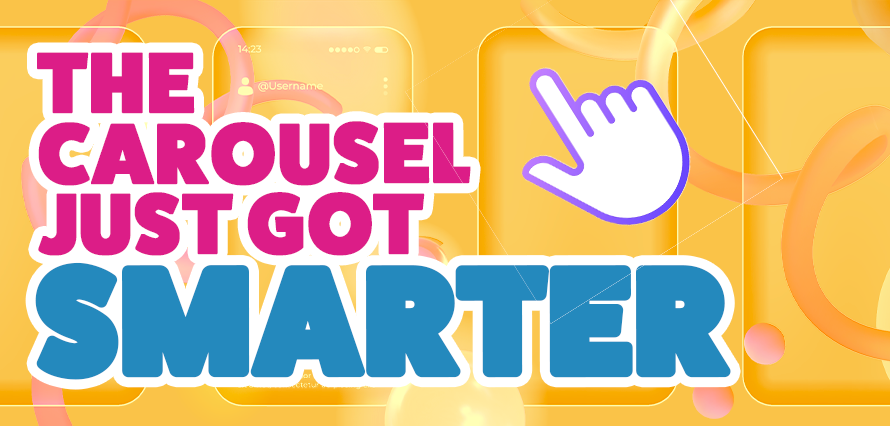July 29, 2025

There’s a new feature being tested on Instagram that hasn’t made a big splash (yet), but for social teams serious about performance, it could quietly reshape how we plan, design, and optimise content.
Instagram is trialling a new analytics layer that shows how many likes each individual frame in a carousel post receives. It’s not perfect data, likes are attributed based on which slide was visible when the user hit the heart, but it’s a step closer to the holy grail: creative-level insights inside a single post.
If this rolls out more broadly, we’ll finally get a more granular view of what’s actually landing within multi-frame content. In a world where thumb-stopping visuals and swipe-worthy storytelling are everything, this isn’t a gimmick – it’s overdue.
What it actually tells us
Let’s be honest: people rarely swipe through an entire carousel unless you’ve nailed the hook. The first frame might earn likes by default, think of it like a poster on a wall but the second, third or fifth frame? That’s effort. That means interest. And now we’ll be able to measure that interest, frame by frame.
Say you’re a food brand running recipe carousels. Knowing which image or step got the most engagement could inform your next shoot. A B2B agency? Spotting that the stats slide outperformed the opening quote tells you where the audience’s curiosity peaks. You’re no longer guessing what worked, you’ve got evidence.
Of course, there’s nuance here. A like doesn’t equal intent. But if one frame consistently outperforms others, it’s a clue. And in social strategy, we’re often stitching clues into insights.
Why carousels already win
This all builds on what we already know about carousels: they work. Adam Mosseri himself confirmed that carousels tend to outperform single images because they encourage interaction – more taps, more swipes, more time spent. And when users don’t interact the first time? Instagram literally gives your post a second shot by resurfacing the next frame. It’s a format with built-in re-engagement.
If you’re not already leaning into carousels, now’s the time. The format gives you multiple bites at the engagement apple and with this new feature, you’ll know which bites hit hardest.
So what should brands do now?
If you’re running brand accounts, here’s your takeaway:
- Treat carousels like a sequence, not a dump: Each frame should earn its place and carry the story forward.
- Design for the swipe: Think narrative pacing, visual contrast, and strategic hooks on frames two, three, and four.
- Experiment, then analyse: If this feature rolls out to you, use it. Learn from it. Optimise.
This is a moment where Instagram is quietly giving us more creative intelligence, not just aggregated engagement, but directional clues. It’s not flawless data, but it’s the closest we’ve been to heat mapping multi-frame content at scale.
In short: carousel content just got smarter. Now it’s on us to use that edge.